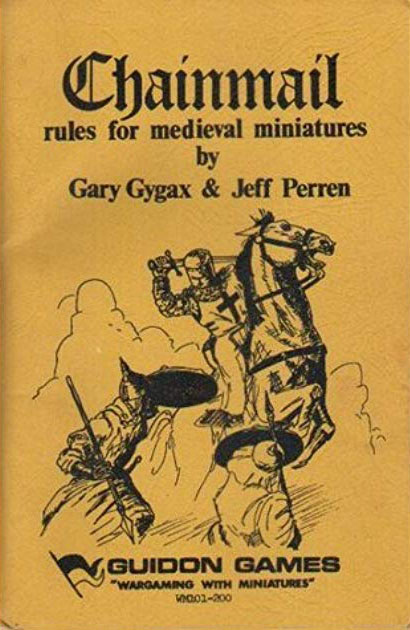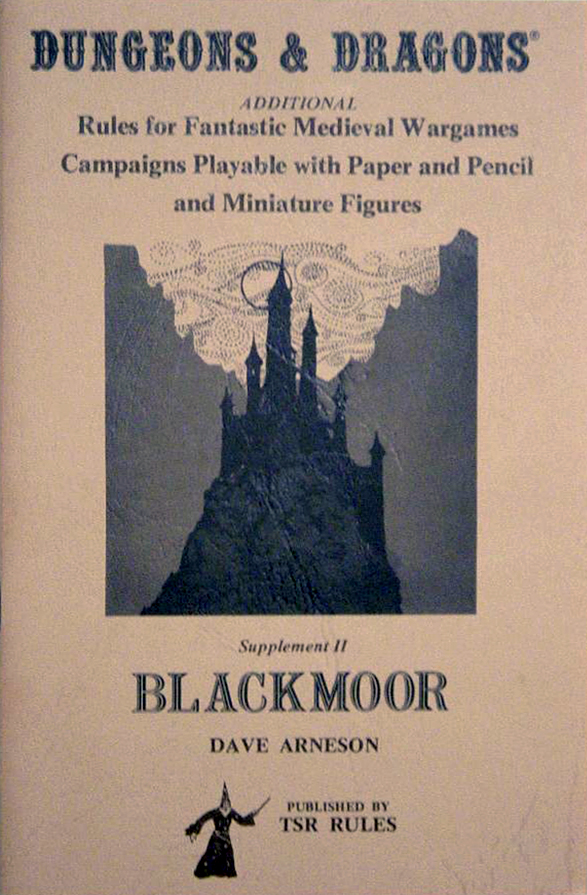
Read Magic with Michael Curtis: Frodo Lives!
by Michael Curtis
Read Magic with Michael Curtis is an occasional feature that explores the connections between the works of Appendix N and fantasy gaming, examining how those stories inspired the many facets of Dungeons & Dragons and Dungeon Crawl Classics.
For more than forty years, people have gathered together to play games casting themselves as fantastical heroes facing off against terrible monsters in order to gain wealth, glory…and experience points. Fantasy roleplaying has impacted the arts and entertainment in ways unimagined by the hobby’s creators, influencing everything from video games to Hollywood movies and popular television series. But fantasy roleplaying did not emerge Athena-like from the minds of Gygax and Arneson. A fortuitous chain of events led to the emergence of Dungeons & Dragons and the roleplaying hobby as a whole. Foremost among the events that brought us to where we are today is the story of a hobbit, a ring, and a trilogy of illicit paperback novels.
Fantasy fiction was in poor shape in the 1950s and 1960s. The golden age of the pulp magazines like Weird Tales was over, a victim to both wartime shortages and the rising prominence of science fiction. Lovecraft and Howard were both dead, and Clark Ashton Smith had stopped writing his wonderfully evocative fantasy tales. Fantasy had been shoved aside by the atomic bomb and Sputnik. Even the most arguably famous fantasy title of all time, Tolkien’s The Lord of the Rings, sold poorly in the US, due to it only being available in hardback with a $15 cover price—about $115 in modern dollars! Suffice to say, there were few fans of fantasy fiction willing to part with such a kingly sum to assuage their desire for imaginative, fanciful tales.
Inevitably, wherever there is a desire, someone finds a way to satiate that craving—especially if there’s money to be made in the process. Donald A. Wollheim, editor-in-chief of Ace Books, approached Tolkien’s American publisher, Houghton Mifflin, in 1964 hoping to acquire the paperback rights to The Lord of the Rings for the U.S. market. He was rebuffed, however. Tolkien considered The Lord of the Rings to be literature, not mere fiction, and bristled at the idea of releasing the trilogy as mass-marketed paperbacks, saying he’d never allow his magnum opus to appear in so “degenerate a form.” Thankfully for the fantasy role-playing hobby, this didn’t stop Wollheim.
Wollheim discovered that The Lord of the Rings was not copyrighted in the United States due to an obscure legal loophole. He concluded that Houghton Mifflin couldn’t grant him the right to publish paperback editions of the novels simply because they didn’t own the copyright. As far as Wollheim was concerned, there was nothing preventing Ace Books from printing The Lord of the Rings in paperback, with the added benefit of not having to pay royalties to Tolkien. After commissioning three fantastically colorful covers by Jack Gaughan, Ace Books released The Fellowship of the Ring, The Two Towers, and The Return of the King between May and June 1965.
These unauthorized editions sold in hitherto unimaginable numbers for fantasy fiction. Ace sold more than 100,000 copies in the first few months. The success of Ace’s unauthorized versions forced Houghton Mifflin’s hand, regardless of Professor Tolkien’s views on the “degenerate paperback.” Houghton Mifflin, in conjunction of Ballantine Books, released The Lord of the Rings in paperback during October of 1965, complete with a blurb from the author stating “This paperback edition, and no other has been published with my consent and cooperation. Those who approve of courtesy (at least) to living authors will purchase it and no other.” Despite the official approval of Tolkien, the Ace versions continued to sell well, partially due to the lower cover price of 75 cents compared to Ballantine’s 95 cent price (Ballantine had to pay Tolkien royalties, after all!)
The success of the Ace Books paperbacks begs the question of why the title suddenly experienced tremendous market success when fantasy was at an ebb. What was it about Tolkien’s work that caused this blaze of renewed interest in fantasy fiction? A large part of the answer lies in the American counterculture movement of the 1960s.
Like any great literature, The Lord of the Rings allows the reader to interpret it through their own personal lens, to assign metaphorical meaning and allegory to the text—even going beyond what the author’s own intent. To the burgeoning counterculture, a vibrant, youthful section of the American population dwelling in the shadow of the Vietnam War, The Lord of the Rings represented many of the ideals idolize by the so-called “hippies.” They saw the pastoral Shire as a reflection of the communal living concept, peaceful existence with strong ties to the land and family that was more desirable than a suburban home paid for by selling one’s soul to the Rat Race. Saruman’s destruction of Fangorn Forest resonated with those who saw industry defiling Mother Earth for the sake of profit. Isengard’s massed ranks of Uruk-hai and the weapons of war manufactured by Saruman’s forces mirrored the hated industrial-military complex that profited from dead American boys in Southeast Asia.
Most importantly, The Lord of the Rings focused on a war lacking moral ambiguities. The battle against Sauron was a stand against Evil, a conflict waged not over political philosophies and conducted by unwilling draftees, but a war to protect the freedom of the common man (and dwarf, elf, and hobbit). It’s no wonder that buttons proclaiming “Frodo Lives!” quickly joined the ranks of mandalas, peace signs, and “Free Huey!” pins among the counterculture.
The counterculture’s embrace of Tolkien subsequently brought The Lord of the Rings to college campuses and high schools, where it found an audience with young adults who might otherwise lack any interest in the protest politics of the 1960s. Among this new audience were wargamers, many of whom were males of draftable age. For these young men, the idea of experiencing warfare through the safe and morally unambiguous medium of miniature battles was far more attractive than the all-too-possible alternative of service in Vietnam. It wasn’t long before a pair of game designers in the Midwest saw an untapped market that combined miniature wargaming with Tolkien’s fabulous stories.
Although Gary Gygax would distance Dungeons & Dragons from Tolkien in later years, (likely partially due to a lawsuit leveled against TSR by Tolkien’s estate), Middle-Earth’s fingerprints are all over Chainmail, the medieval miniature wargame rules developed by himself and Jeff Perren in 1970 and published in 1971. Hobbits, Orcs (who are divided into tribes such as “Orcs of Modor,” “Isengarders,” and “Orcs of the White Hand”), Balrogs, Nazgul, and Wargs are all found in Chainmail’s fantasy supplement section. In fact, Gygax explicitly states that these additional rules were included for those wishing “to refight the epic struggles related by J.R.R. Tolkien, Robert E. Howard, and other fantasy writers.” Chainmail allowed miniature wargamers to not only recreate the Battle of Agincourt, but the Battle of Helm’s Deep as well. Wargaming and Middle-Earth had cross-pollinated and the harvest of the resulting fruit would be a bountiful one.
Ace Book’s unauthorized paperbacks of The Lord of the Rings lured new devotees into the genre of fantasy fiction, serving to open the gate to a long slumbering realm. With the runaway success of both the unauthorized and later Ballantine Book’s legal paperback versions, readers displayed a craving for fantasy fiction. Suddenly, other publishing houses, seeing the market for fantasy, began reprinting any fantasy fiction they had the rights to and literary agents sought out new manuscripts—some of them quite terrible—from authors writing in the fantasy vein. Fantasy fiction’s Silver Age had arrived, heralding a deluge of stories, novels, and even comic book characters like Doctor Strange, that hasn’t slowed to this day.
Would fantasy roleplaying exist without these mass-market paperback editions of The Lord of the Rings reviving the genre of fantasy literature and the fans thereof? It’s doubtful. The success of Dungeons & Dragons is truly due to a “perfect storm” of conditions that allowed this innovative game to emerge. Had the fantasy fiction market remained in a slump, Gygax and Perren wouldn’t have seen the need, or let alone considered the idea, of designing rules for fantasy wargaming. Without Chainmail’s fantasy supplement, Dave Arneson might never have had a rule system to serve as the basis for his Blackmoor campaign, and without Blackmoor, the very central conceits of fantasy roleplaying—players assuming the role of a single individual who increases incompetency with experience—would never have occurred. We might all still be pushing Napoleonic miniatures around a sand table rather than fighting dragons and challenging archmages. So the next time you’re giving thanks to the legends of gaming, be sure to tip your figurative hat in acknowledgment of Donald A. Wollheim and his somewhat questionable business practices, without whom Appendix N and the game that inspired by it, might never have come to pass.











